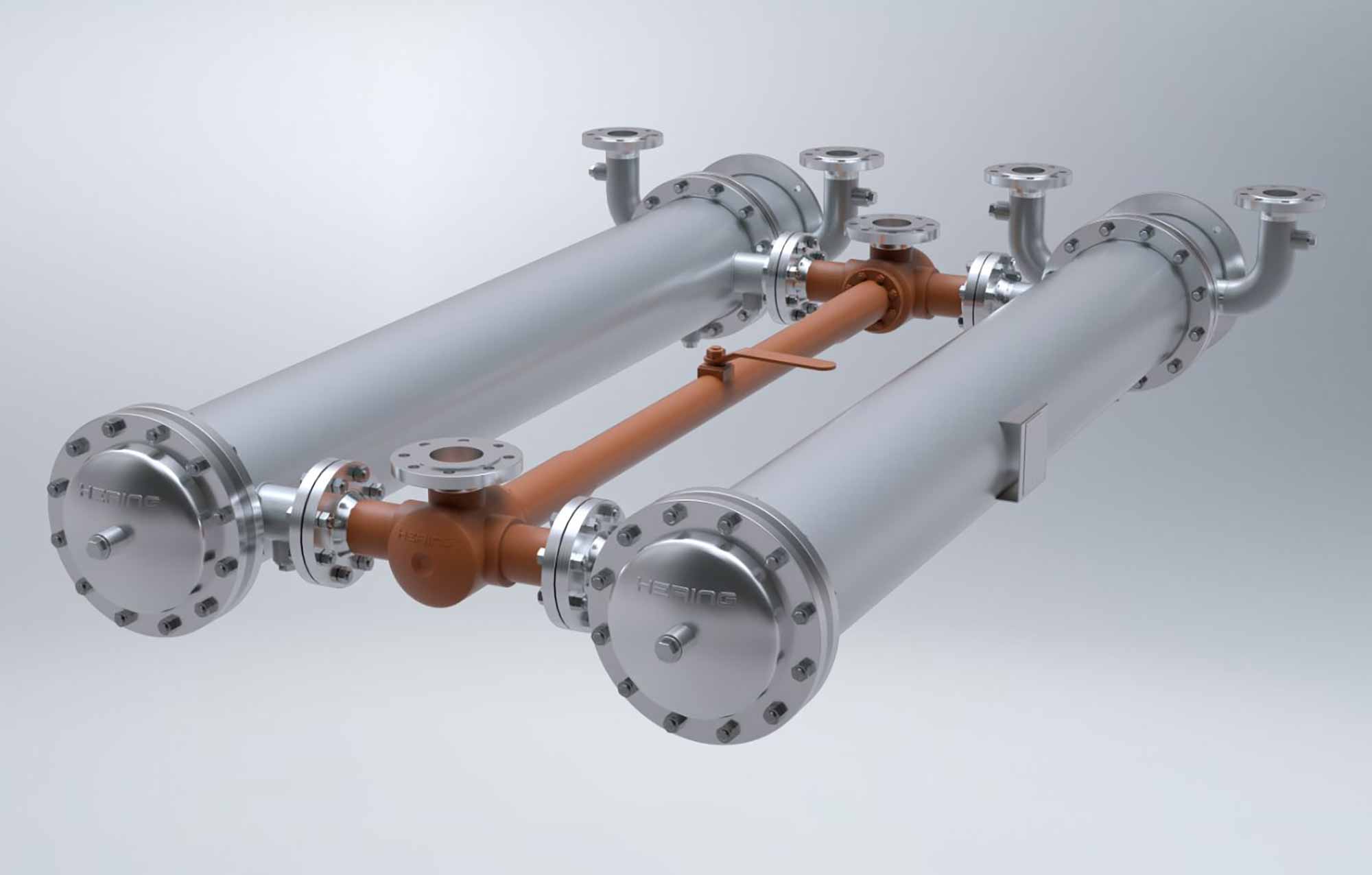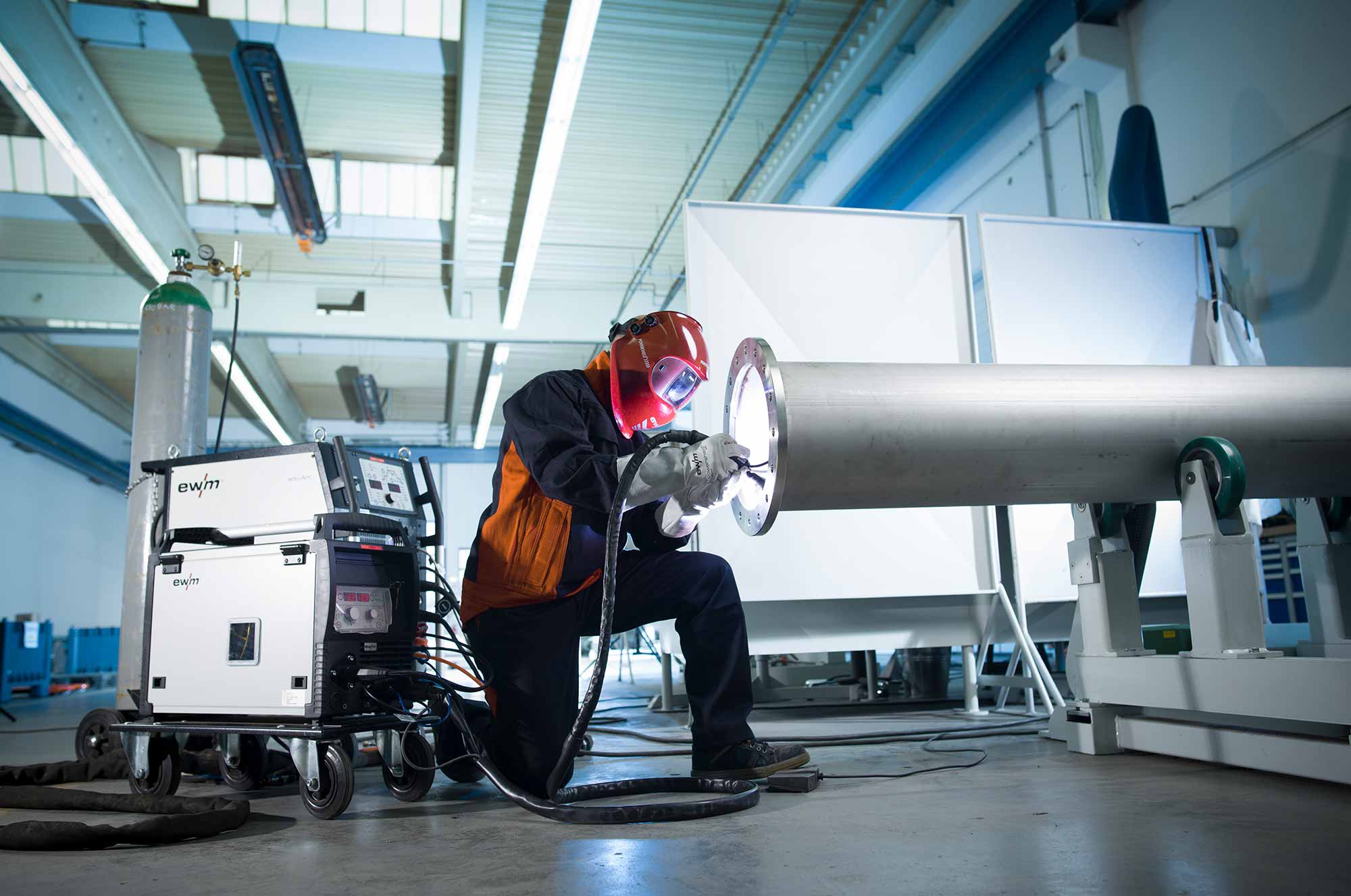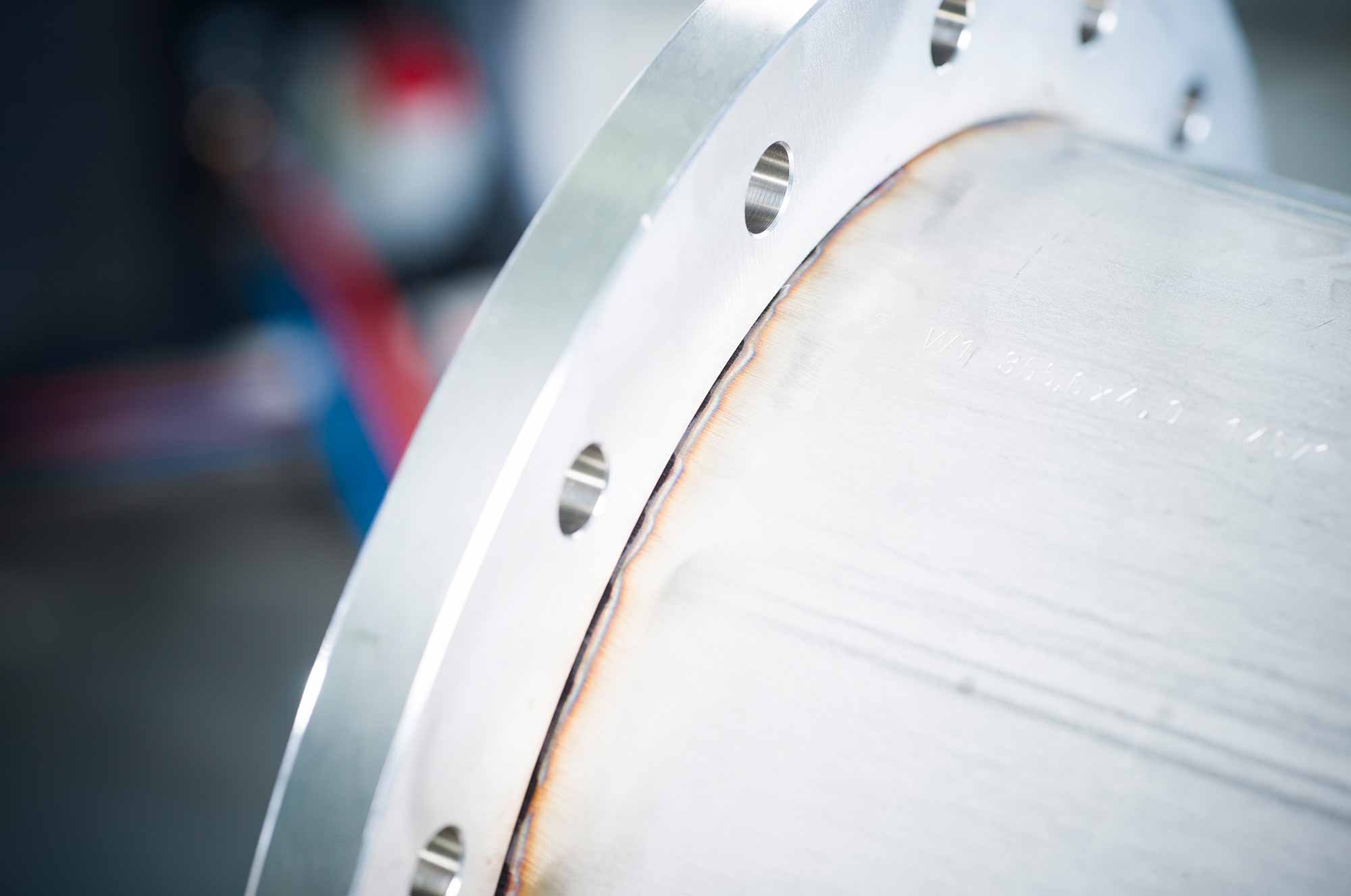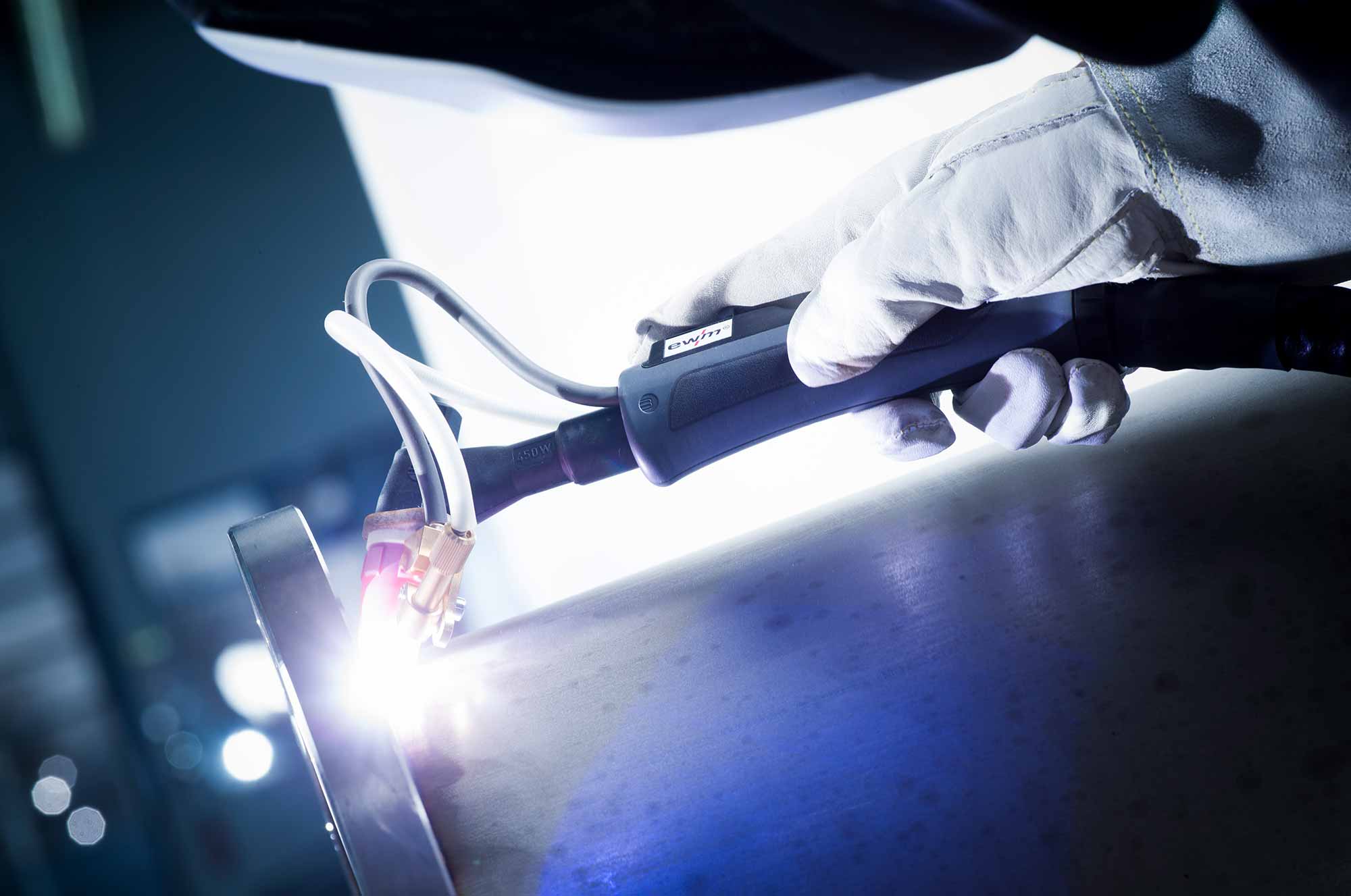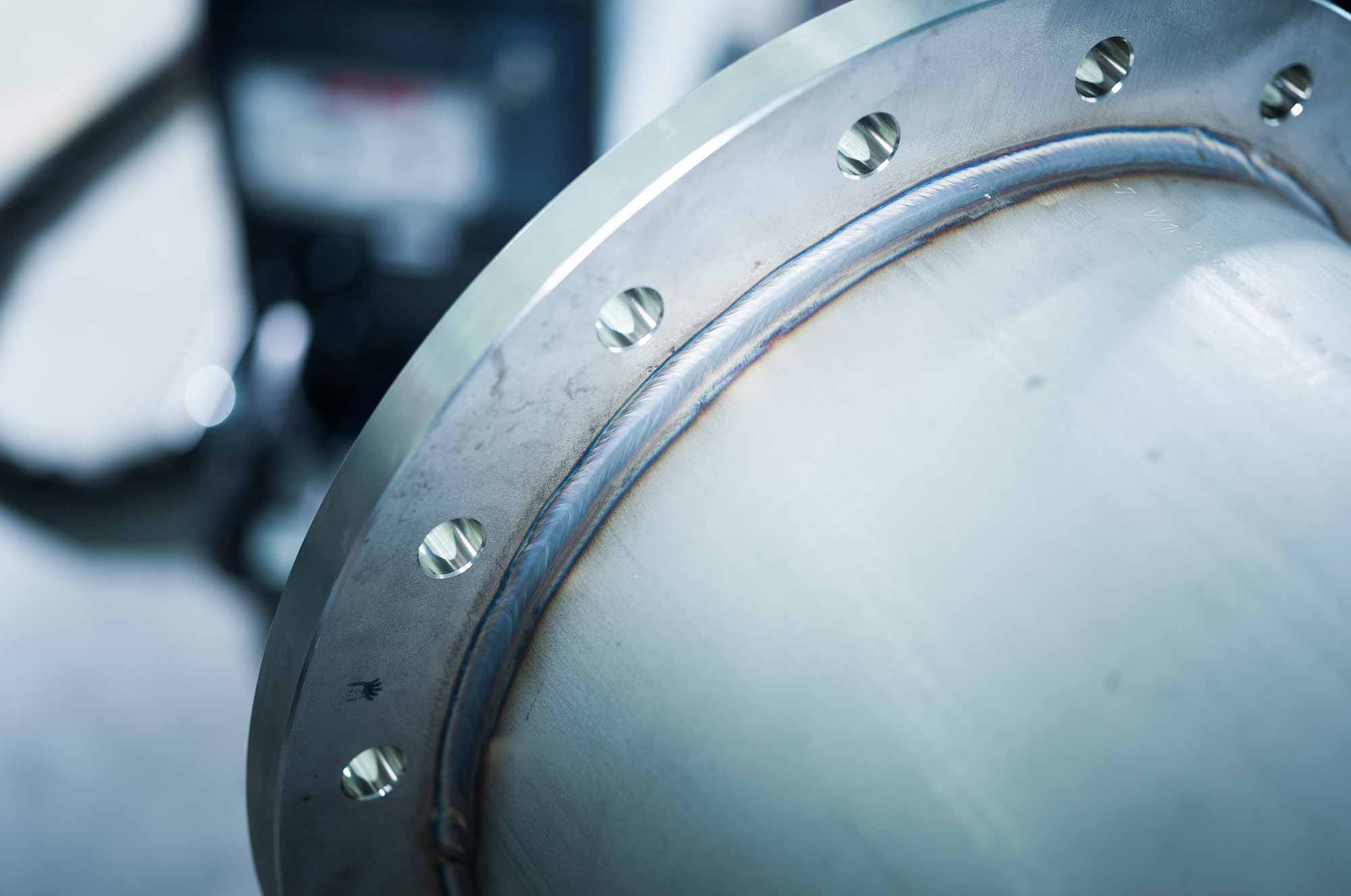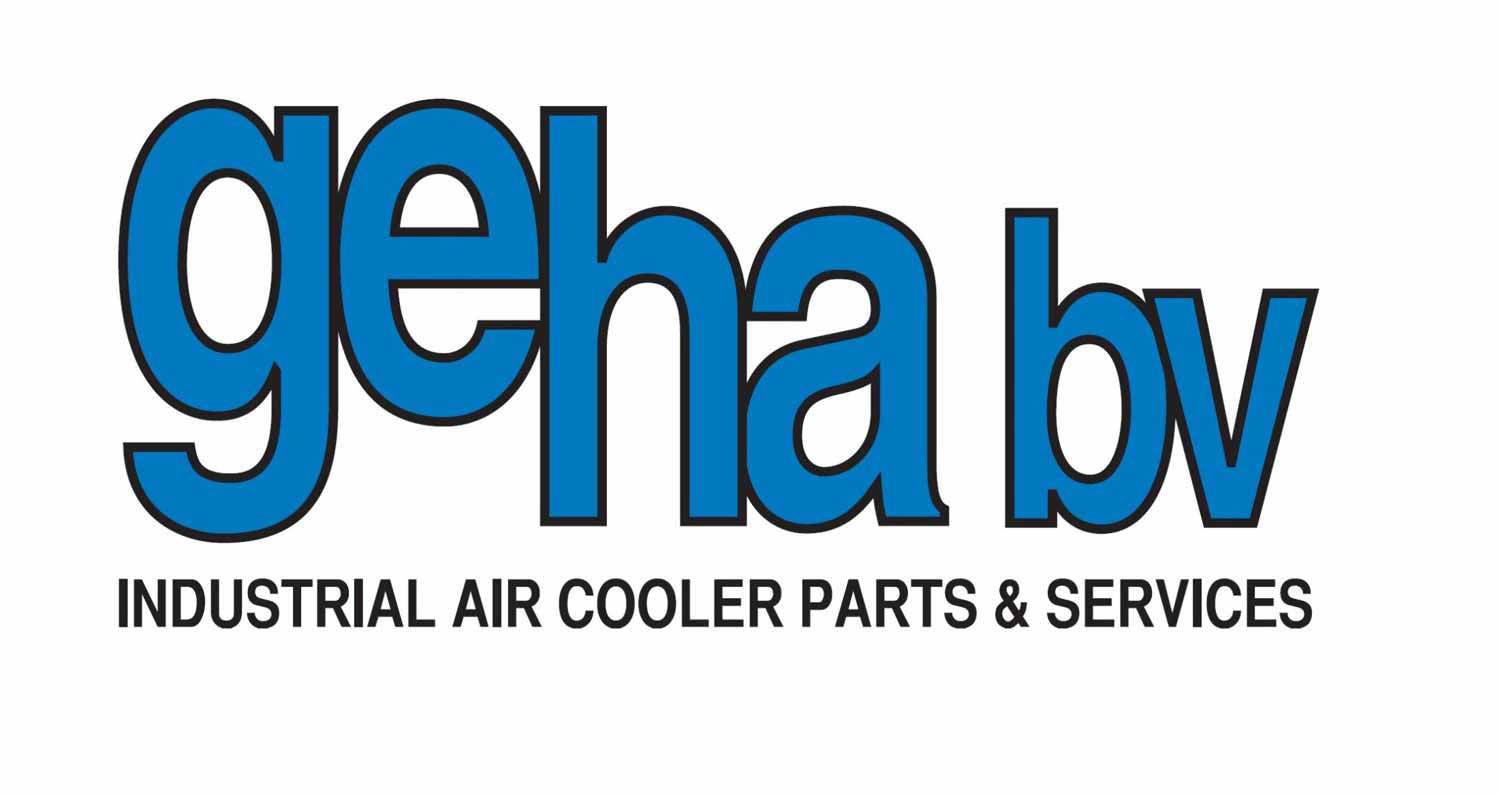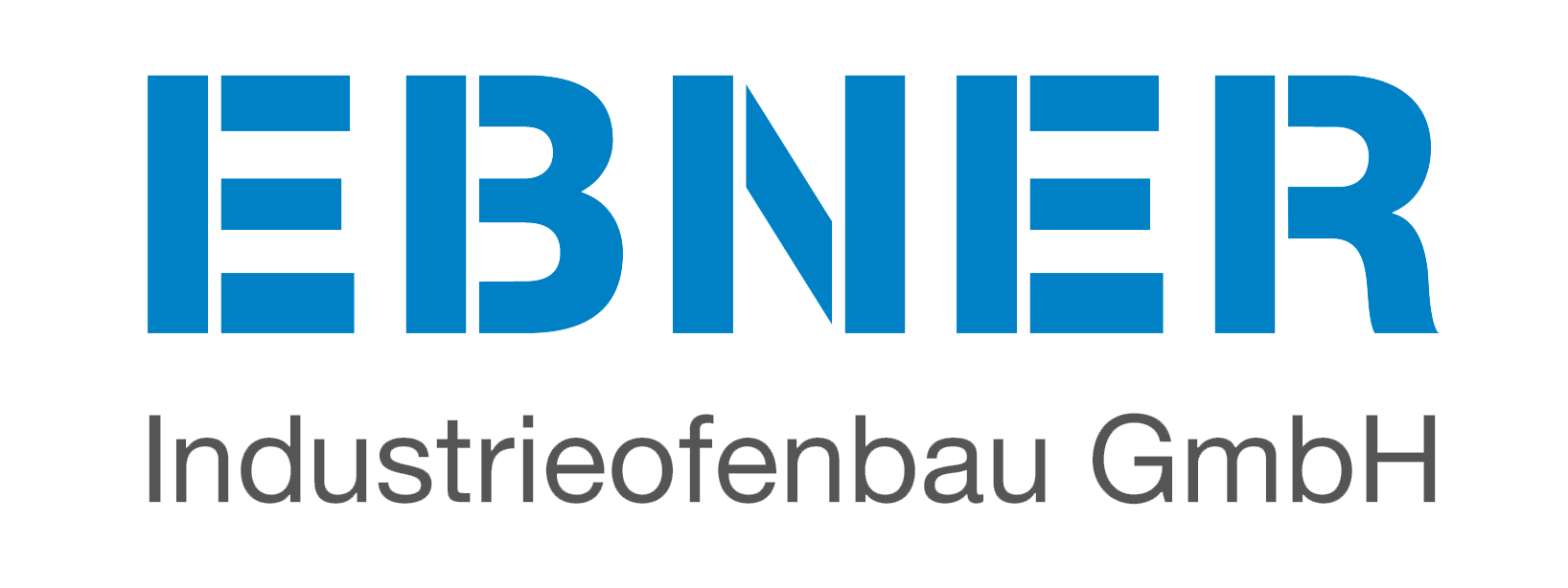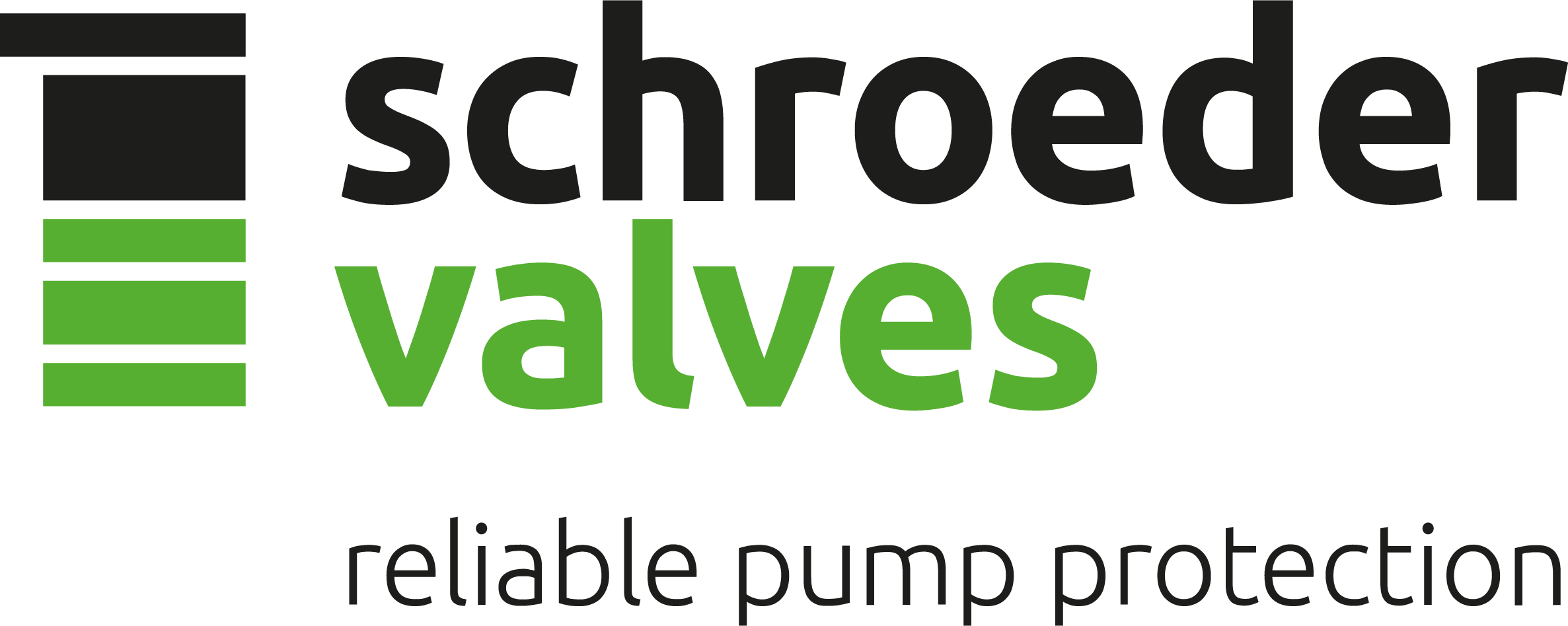- Du er her:
-
Hjem

- Referanses
PraxisReport
| Bransje: | Rørledningsbygging |
| Materiale: | høylegert stål |
| Sveiseprosesser: | tigSpeed TIG-varmtråd |
| Nøkkelord: | tigSpeed, TIG-sveising, delvis mekanisert, Tetrix, Kvalitet på sveisestreng, Oscillere, |
Reduce non-productive times by up to 50%
Utgangspunktet:
Countless pipes are used at Hering: Many pipes are joined together to make pipe bundles and then used in another pipe. The welding procedures of choice for manufacturing heat exchangers at Hering AG were MMA and MIG/MAG welding. TIG welding takes a backseat, predestined for pipe-flange connections. This procedure delivers high-quality seams with reduced heat input and minimal spatter formation, significantly reducing post-weld work. However, employees are used to working with just one hand for MMA welding and with MIG/MAG welding, there is continuous wire feeding.
Countless pipes are used at Hering: Many pipes are joined together to make pipe bundles and then used in another pipe. The welding procedures of choice for manufacturing heat exchangers at Hering AG were MMA and MIG/MAG welding. TIG welding takes a backseat, predestined for pipe-flange connections. This procedure delivers high-quality seams with reduced heat input and minimal spatter formation, significantly reducing post-weld work. However, employees are used to working with just one hand for MMA welding and with MIG/MAG welding, there is continuous wire feeding.
Løsningen:
The field sales employees suggested joining the pipe-flange connections using TIG and tigSpeed, as this type of join requires a particularly high-quality weld connection. To quash the initial doubt, the employee loaned the company the corresponding machine. tigSpeed is a TIG wire feeder. It imitates manual TIG welding by superimposing an additional forward and backward movement on the continuous wire feed. As a result, the welding consumable is repeatedly drawn out of the weld pool and passes over drop by drop. In the case of hot wire welding, the welding consumable is preheated. This further increases the deposition rate, which allows the consumable to flow better, thereby producing a very uniform weld seam.
The field sales employees suggested joining the pipe-flange connections using TIG and tigSpeed, as this type of join requires a particularly high-quality weld connection. To quash the initial doubt, the employee loaned the company the corresponding machine. tigSpeed is a TIG wire feeder. It imitates manual TIG welding by superimposing an additional forward and backward movement on the continuous wire feed. As a result, the welding consumable is repeatedly drawn out of the weld pool and passes over drop by drop. In the case of hot wire welding, the welding consumable is preheated. This further increases the deposition rate, which allows the consumable to flow better, thereby producing a very uniform weld seam.
Resultatet:
The advantages are obvious: Thanks to automatic wire feeding, the welder can concentrate totally on the welding process. “A flange can be welded onto the pipe in just one working step and because I don't need to change welding rods, there are no contact points,” explains Valmir Xhaferi, one of the welders at Hering AG. In addition, the automatic feed keeps your second hand free to support the guide hand. “It's a great help, particularly with long seams,” says Xhaferi. And Christian Rasch, CEO/Executive Board member at Hering AG, is convinced that these savings could be even bigger in companies with less setup time.
The advantages are obvious: Thanks to automatic wire feeding, the welder can concentrate totally on the welding process. “A flange can be welded onto the pipe in just one working step and because I don't need to change welding rods, there are no contact points,” explains Valmir Xhaferi, one of the welders at Hering AG. In addition, the automatic feed keeps your second hand free to support the guide hand. “It's a great help, particularly with long seams,” says Xhaferi. And Christian Rasch, CEO/Executive Board member at Hering AG, is convinced that these savings could be even bigger in companies with less setup time.
